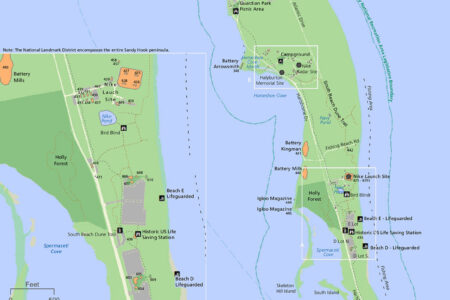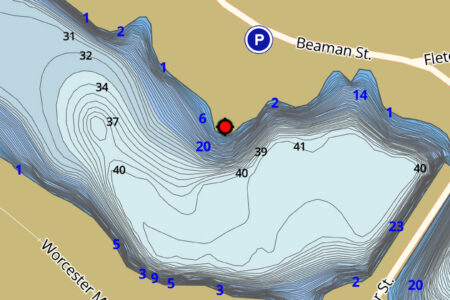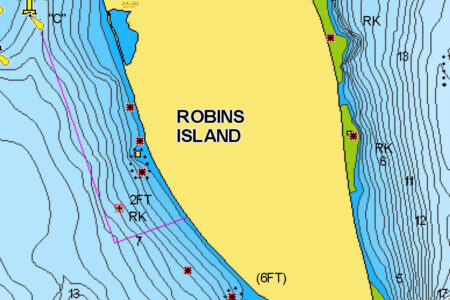While it’s true this is a “hot” spot feature, we’re hoping you’ll think “cold.” Because of Wawayanda Lake’s Passaic County elevation, it’s 255 acres freeze sooner, thickens more, and the ice lasts longer than elsewhere in New Jersey.
Word is quiet about Wawayanda being one of the state’s best winter destinations, but many feel it is. Every fish species there should be available if ice conditions allow, and then after the melt, you can take advantage of the launch ramp – a good one. But no more than electric power is permitted.
The myriad coves, points, drops, and rock formations make Waywayanda feel larger than it is; because it’s as deep as 90 feet, it has greater mass than a shallow lake. Dense weedbeds do exist from May onward in some of the shallows, making weedless frogs, Johnson Minnow spoons, plastics rigged on inset hooks, and tungsten jigs that penetrate the thickness good choices. Topwater plugs work when fished over submerged weeds, in pockets, and along weedlines. Many of the weedlines are curvaceous, however, because the lake is anything but a cookie-cutter impoundment. As a marvel of glacial formation, it offers abundant structural opportunity.

The irregularity of the lake’s bottom means fish habitat is plentiful. So are the fish. Landlocked salmon, rainbow trout, largemouth bass, smallmouth bass, black crappie (more than white crappie), chain pickerel, yellow perch, various sunfish, and from what I’m told, even bowfin get caught here. Because the landlocked salmon and holdover rainbow trout fishery is so attractive, some ice fishermen jig over deep water, having set shiner-baited tip-ups for bass and pickerel among nearby residual weeds.
Salmon aren’t usually on the bottom and sometimes get caught a couple of feet under the ice. Fishing over deep water near weeds might be a good idea. For the rainbows, too, since weeds lingering from the warmwater months hold forage salmonids feed on. During spring and early summer, weight live herring with split shot and drift them at about the 15-foot level over open water depths. The lake has acres of deep water where watching a sonar graph locates fish. Some anglers are friendly and eager to share information, helping to close the gap.
Salmonids get caught on spinners and Phoebe spoons, too. Trolling Phoebes at the surface can produce into late June, when salmon will rush upward from suspending below and strike savagely. Some anglers split the day between them and bass, pickerel, and big black crappie.
Wawayanda is famous for its largemouth bass, abundant and good-sized. If you give the lake an honest effort, expect to catch one weighing nearly 4 pounds. Bigger exist, but bass of almost 4 pounds are standout fish, though others caught will be over 2 pounds. Pickerel 2 feet long inhabit similar habitat as bass and black crappie, but if you pay attention, you’ll sometimes find you’re into bass in a particular cove, and catching only pickerel along the not-so-well-defined weedline of an extensive flat. Maybe a 14-inch black crappie takes the plastic you intend for bass where branches have fallen into the lake over the edge of a rock outcropping. You might even take the clue and try smaller jigs, since crappie often congregate.
The thing to remember is that warmwater species occupy every significant piece of habitat you’ll approach. Do it quietly and above all patiently. Fishing here is less about speed and covering water, because good water is easy to find. You can bring tackle boxes full of lures; you can match different rod and reel combos to each type – nothing to dissuade – but if you slow down and throw an unweighted traditional worm on an inset hook, you might do even better by concentrating on teasing out takes. Sometimes a weedless frog is better, though, and a shiny Johnson Minnow spoon catches pickerel. Just make sure reels are loaded with braid of at least 20-pound test, if you want to wrangle a big fish from thick weeds.
Time of day is especially important during the summer – early and late is usually best – but even if you’re on the ice in late January into February, early and late is often the best time especially for a big fish.




